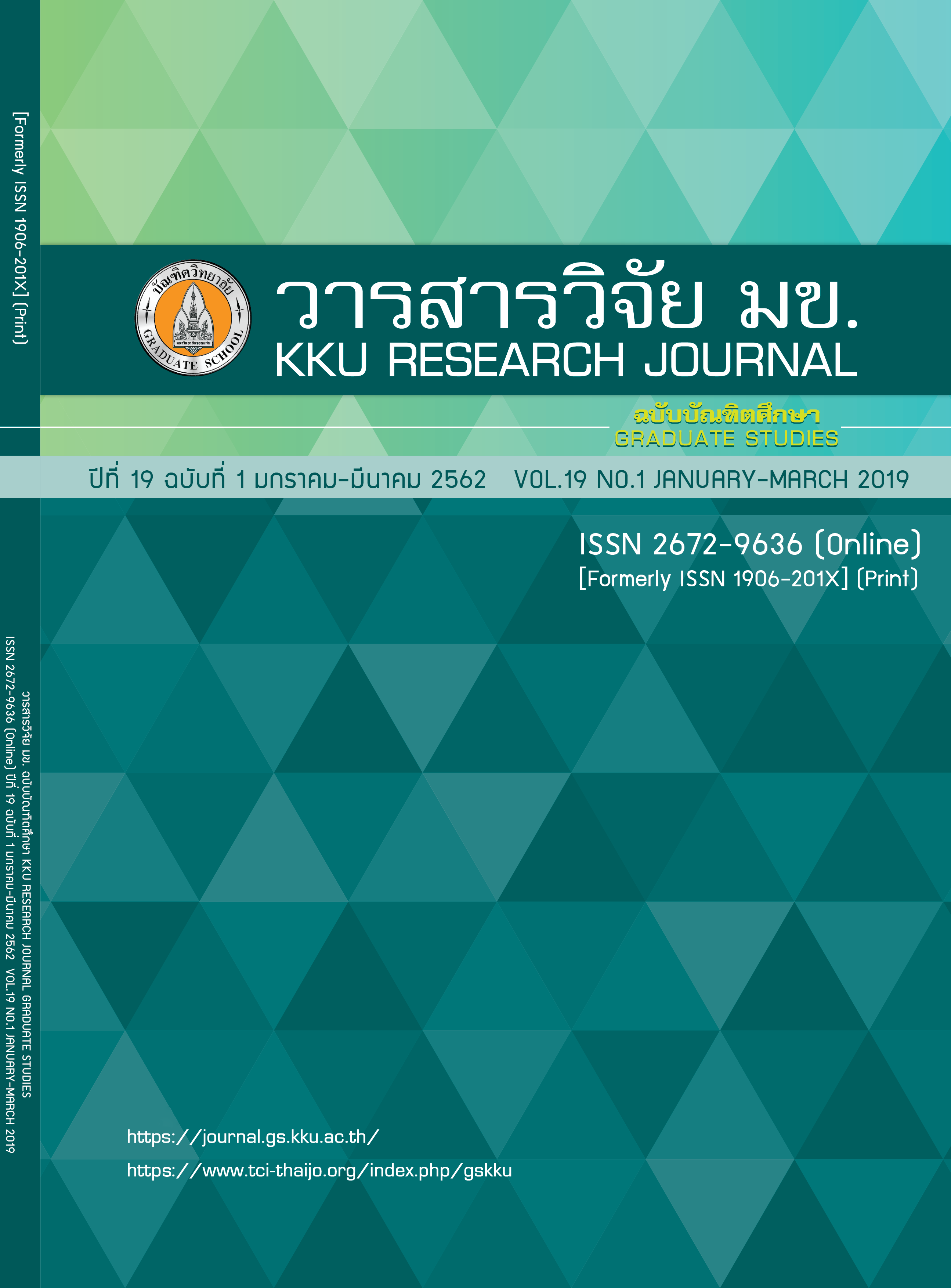A Study of Decolorization of Sugar Cane Syrup Using Electrolysis Process
Keywords:
Decolorization, Sugar cane syrup, Electrolysis processAbstract
This research presents a study of decolorization of sugar cane syrup using electrolysis process to study the solution for decolorizations, and energy consumption. The experiments use the DC power supply voltage of 12 V, current of 100 mA, and discharge for 1 hours into the 600 ml of sugar syrups, and sugar cane juice before boiling. The experimental results with the best colour values were in the experiments, discharging into sugar cane juice and then boiled, the type of electrode is aluminium. The best colour value was 3,414.00 ICUMSA, the colour values were lower than those in other conditions and compared to the standard colour of syrup or sugar in the raw sugar production process with the colour values of 1,000-3,500 ICUMSA.
References
2. Thai Sugar Millers Corporation Limited. Sugar Manufactory Process. [Internet] 2018 Available from http://www.thaisugarmillers.com/tsmc-02-02.html
3. Okuno M, Tamaki H. A Novel Technique for the Decolorization of Sugarcane Juice. Journal of Food Science. 2002; 67(1): 236-238.
4. Rajneesh Dwivedi. and Zulfiqarali Impact of Electrolytic Clarification on Turbidity of Cane Juice. Journal of Chemical, Biological and Physical Sciences: JCBPS. 2015; 5(3). 2762-2772.
5. Mudoga HL, Yucel H, Kincal NS. Decolorization of sugar syrups using commercial and sugar beet pulp based activated carbons. Bioresource Technology. 2008; 99(9). 3528-3533.
6. Saska M, Zossi BS, Liu H. Removal of colour in sugar cane juice clarification by defecation, sulfitation and carbonation. International Sugar Journal. 2010; 112(1337). 26-33.
7. Barakat MA, Ismat-Shah S. Utilization of anion exchange resin Spectra/Gel. Arabian Journal of Chemistry. 2013; 6(1). 307-311.
8. Ihara I, Kanamura K, Shimada E, Watanabe T. High Gradient Magnetic Separation Combined With Electrocoagulation and Electrochemical Oxidation. IEEE Transactions on Applied Superconductivity for the Treatment of Landfill Leachate, June 2004; pp.1558-1560.
9. Yano T, Shimomura N, Uchiyama I, Fukawa F, Teranishi K. Decolorization of Indigo Carmine Solution Using Nanosecond Pulsed Power. IEEE Transactions on Dielectrics and Electrical Insulation. August 2009; 16(4). 1081-1087.
10. Lekhajaroenkul T, Supapa S, Yanpirat P. Technical and Economic Feasibility analysis on the installation of purified water system by Electrical Ion Discharger instead of Ion Resin Exchanger a case study of purified water plant generation system for Pharmaceutical Process. Kasem Bundit Engineering Journal. 6(2); 50-71.
11. Daosawang W, Somboot P. DC Pulse Power Supply for Electrocoagulation in Water treatment. Naresuan University Journal: Science and Technology. 2017; 25(1).
12. Mahachai R. Electroanalytical Chemistry Techniques. Thailand: KKU Printing. 2557.
13. Robert G. Brown. Introductory Physics II Electricity, Magnetism and Optics. [Internet] 2001 Available from https://webhome.phy.duke.edu/~rgb/Class/intro_physics_2/intro_physics_2.a4.pdf
14. Mitr Phol Sugar Corp., Ltd. Standard Physical SpecRaw Sugar. [Internet] 2013 Available from https://www.mitrphol.com/sugar/product_business.php?id=20
15. Eastern Sugar And Cane Public Company Limited. Brown. Raw Sugar. [Internet] 2015 Available from http://www.esgroup.co.th/th/business/sugar



